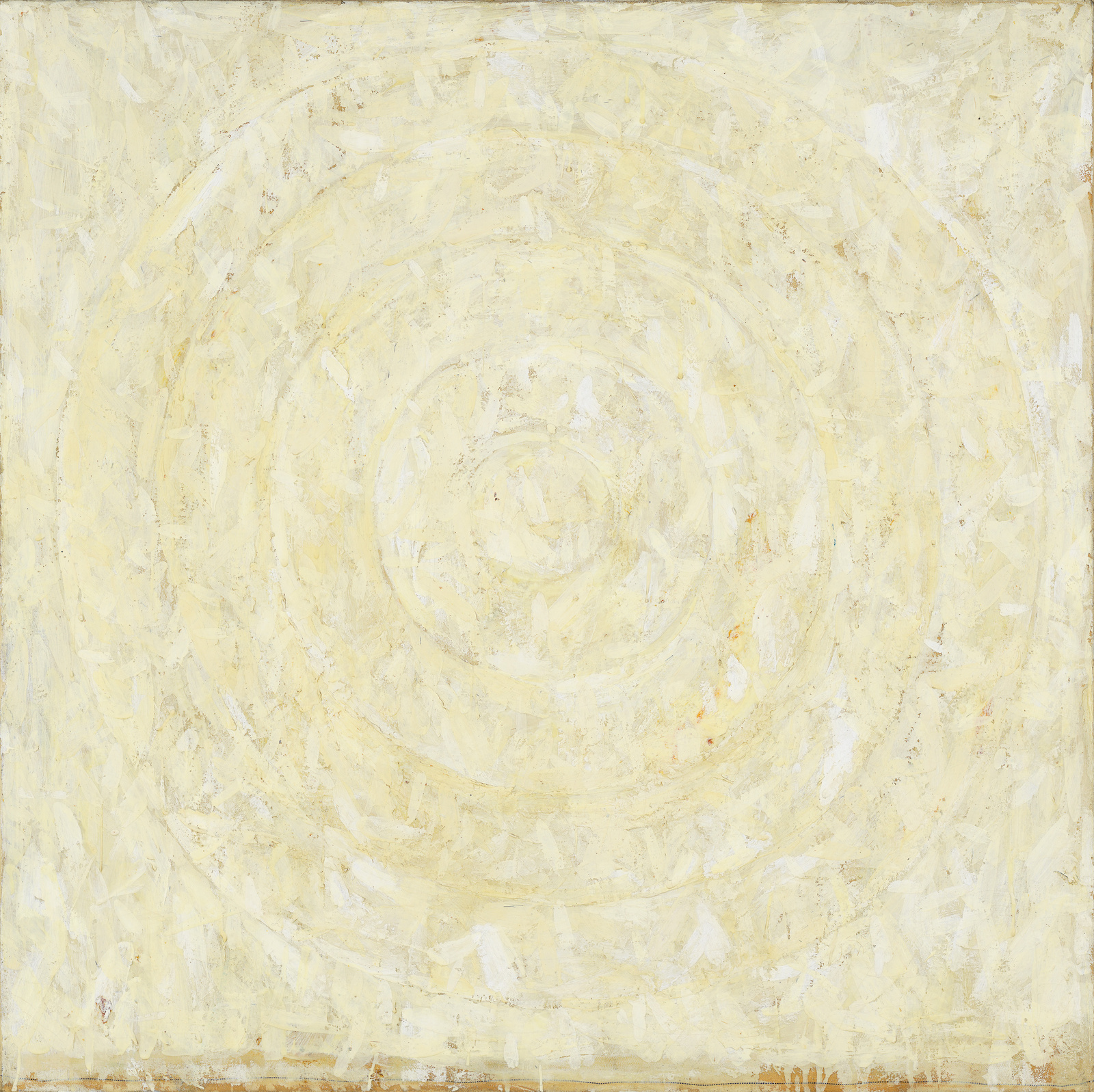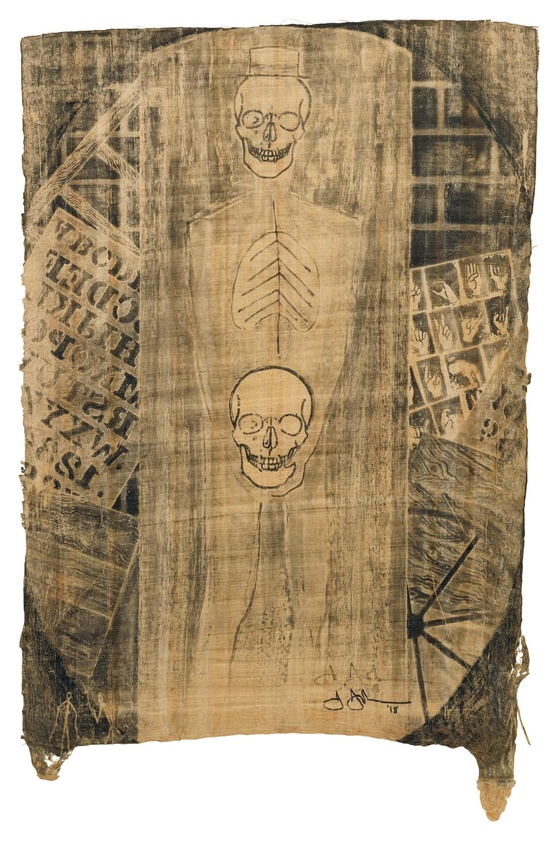Jasper Johns, White Target, 1957
From American Legends: From Calder to O'Keeffe, Signs & Symbols
Mar 24, 2014
0:00
Jasper Johns, White Target, 1957
0:00
Narrator: Jasper Johns made White Target in oil paint and encaustic, a painting medium consisting of melted wax. Encaustic hardens very quickly, so each brush stroke appears on the canvas exactly as Johns placed it. The individual strokes don’t blend into each other. As prominent as they are, there’s a uniformity to them—one that makes the surface very different from the spontaneous brushwork of the Abstract Expressionists. For these artists, who were a generation older than Johns, gesture was a highly personal matter. A dramatic brushstroke was understood to express an equally dramatic feeling. By contrast, Johns’s surface seems cool and somewhat distant.
For Johns, that impersonality was part of the point. He once told the art historian Leo Steinberg that he chose to paint things like flags and targets because they were, quote, “pre-formed, conventional, depersonalized, factual, exterior elements.” He could include them in paintings without them having to mean anything specific—which meant, in a way, that the paintings were abstract. But at the same time, they were very literal. Theoretically, one could play a real game of darts on a Target painting. And Johns’s Flags have stood in for American-ness on many occasions. So are they actual things, or paintings of things? With Johns’s work, the philosophical problems of representation became part of the painting tradition in a way they’d never been before.

